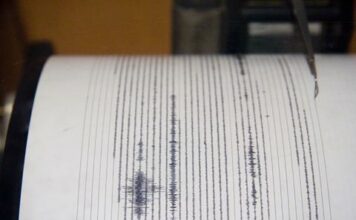Another Hottest Year
The global warming trend continued during 2005, with NASA
scientists saying the year may have been the hottest since reliable
weather records began in the late 1800s. The years 1998, 2002, 2003
and 2004 followed as the next four warmest years, according to the
agency.
By Steve Newman
Another Hottest Year
The global warming trend continued during 2005, with NASA scientists saying the year may have been the hottest since reliable weather records began in the late 1800s. The years 1998, 2002, 2003 and 2004 followed as the next four warmest years, according to the agency. Other researchers had said 2005 was the second-warmest ever recorded, based on data through November. But climatologists at NASA’s Goddard Institute for Space Studies say their hottest ranking was due to inclusion of data from the Arctic. And while there are only a few reporting stations there, NASA says the region experienced unusual warmth during the year. The previous undisputed warmest year was 1998, when a strong El Nino ocean warming added to the global heat. NASA researchers say that what’s significant about 2005 is that global warmth returned to about the level of 1998 without the influence of an El Nino.
Winter Chaos
The singing of sparrows in Moscow heralded the easing of a bitter chill in western Russia that killed hundreds of people and strained energy supplies to several countries. But the return of more seasonal temperatures was at the expense of areas to the west and south, where the Siberian chill moved on to create further winter chaos. Hundreds more perished as the cold wave spread to Ukraine, Poland and the Czech Republic, and southward to the Mediterranean. Wintry conditions blanketed Athens’ Acropolis in snow and froze stretches of the Danube in Bulgaria and Romania. Blizzards in Greece and Turkey isolated thousands of villages and left many without electricity or telephone service.
Tropical Cyclone
Australia’s northwest coast was briefly threatened by high winds and flash flooding from Cyclone Daryl. The storm remained just offshore until losing force.
Cyclone Boloetse formed between Reunion and Madagascar, and was expected to weaken as it encountered cooler waters in the southern Indian Ocean.
Explosive Threat
Geologists at the Hawaiian Volcano Observatory warned that Kilauea Volcano has the potential to be far more explosive than previously thought. Many have believed the mountain produces only colorful lava flows and spectacular fountains of lava. But a new bulletin on the observatory’s Web site advises that historical data shows the mountain has produced explosive eruptions as often as Mount St. Helens in Washington State, although not quite as powerful.
Drought and Anthrax
An outbreak of anthrax is adding to the deaths of endangered Grevy’s zebras in Kenya, where a scorching drought has already been killing them and other wildlife. Officials at the Samburu National Reserve warned that the narrow-striped zebras there are dying from the bacterium at an alarming rate. Samburu is home to most of the 5,000 Grevy’s zebras believed to remain in the wild. According to a report prepared by the Kenya Wildlife Service and the African Wildlife Foundation, an acute form of equine anthrax began appearing in Samburu zebras in December as the drought evaporated water holes and allowed anthrax spores in the cracked soil to be carried by the wind.
Earthquakes
An ancient pagoda in northern Thailand was damaged by a magnitude 5.7 earthquake, centered near the country’s border with Burma. The abbot of Wat Mahawan, in Chiang Mai’s Muang district, said he was worried that the pagoda could collapse because cracks in the building caused by old age had lengthened following the tremor.
Earth movements were also felt in Vanuatu, Taiwan, India’s Andaman Islands, eastern Bulgaria, Croatia, metropolitan Johannesburg, the Colombia-Panama border region and southern parts of the San Francisco Bay Area.
World’s Smallest Fish
Researchers from Singapore say they have discovered the world’s tiniest fish in the steaming peat bogs of Sumatra. The latest diminutive addition to the catalogue of wildlife is called Paedocypris progenetica and is a distant cousin of the carp, according to the scientists from Raffles Museum of Biodiversity, publishing their findings in a journal of the United Kingdom’s Royal Society. The smallest adult specimen captured by the team was a mature female that measured just .31 of an inch from nose to tail. That makes it not only the world’s smallest fish but also the smallest vertebrate as well. Being so small, the fish can survive extreme drought by seeking refuge in the last remaining puddles of the wetland. But they are now threatened by deforestation, draining of the peat bogs for agriculture and increasing wildfires that are destroying their habitat, the researchers warn.












